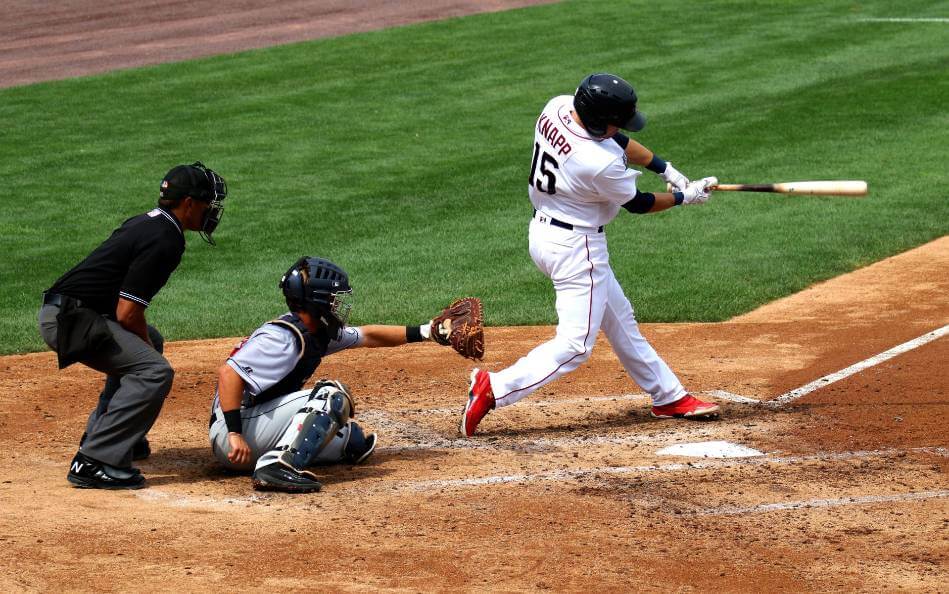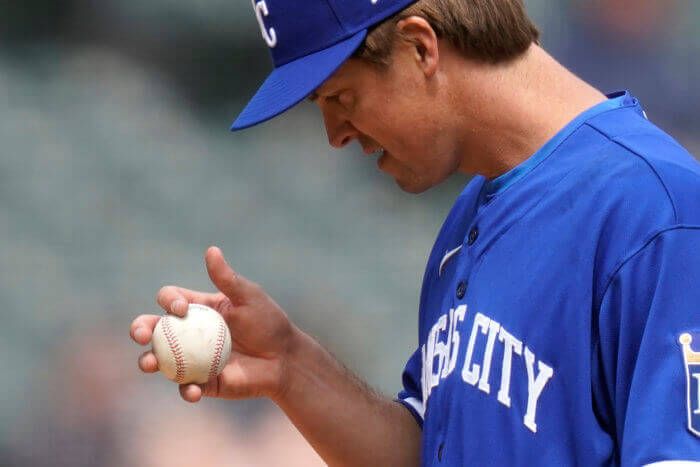Baseball is a game full of complexities and nuances, one of which is the full count. If you’re a fan of this thrilling sport, you’ve undoubtedly heard the term mentioned before. But what exactly does it mean?
In this section, we’ll delve into the concept of a full count in baseball and provide a comprehensive answer to your question. We’ll cover the underlying principles of the game, the terminology associated with it, and the implications of a full count for both the offensive and defensive teams.
Key Takeaways
- A full count in baseball is when a batter has three balls and two strikes.
- The count refers to the number of balls and strikes a batter has accumulated during their plate appearance.
- A full count is a pivotal moment in a plate appearance that holds strategic significance for both the offense and defense.
- Both the pitcher and batter need to adjust their approach during a full count to maximize their chances of success.
- Throughout baseball history, there have been numerous memorable moments that occurred during a full count.
Understanding Baseball Terminology

Before diving into the mechanics of baseball, it’s essential to have a grasp of some common baseball terminology to follow the game’s flow. Here are some critical terms to know:
Batter:
The player on the offensive team who takes his stance at home plate and attempts to hit the pitched ball.
Pitcher:
The player who throws the ball from the pitcher’s mound towards the batter.
Infield:
The area of the field within the diamond, bordered by the four bases.
Outfield:
The area outside the diamond and the four bases, reaching the limits of the field.
Inning:
The unit of play in baseball. Each team plays nine innings, alternating offensive and defensive roles.
Run:
A score in baseball. A run is tallied when a player successfully advances around all four bases and crosses home plate.
Hit:
When a batter successfully puts the ball in play without being caught or leading to an out.
Strike:
A pitch that a batter swings at and misses or a pitch within the strike zone that the batter does not swing at, or a foul ball is hit with two strikes.
Ball:
A pitch that is outside the strike zone and not swung at by the batter.
Foul ball:
A ball hit outside of the foul lines that run parallel to the first and third base lines. A foul ball counts as a strike unless the batter has two strikes, then the count remains the same.
Home run:
A hit that allows the batter to make it around all four bases and touches home plate in one play.
Strike zone:
The area over the home plate that a pitch must pass through to be considered a strike. The top of the zone is at the midpoint between the batter’s shoulders and the bottom of the zone at the batter’s knees.
With these terms in mind, we can now focus on the specifics of a full count in baseball.
Counting Balls and Strikes

Baseball is a game of numbers, and one of the most crucial aspects of the game is tracking the count. The count refers to the number of balls and strikes a batter has accumulated during their plate appearance. Counting balls and strikes is essential to understanding the game and analyzing a player’s performance.
So, how does counting balls and strikes work? Let’s break it down:
| Balls | Strikes |
|---|---|
| When a pitcher throws a pitch outside of the strike zone, and the batter does not swing at it, it is considered a ball. A batter will receive 4 balls, and they will be awarded first base, also known as a walk. | When a pitcher throws a pitch inside the strike zone, and the batter either swings and misses, or does not swing, it is considered a strike. A batter will receive 3 strikes, and after the third strike, the batter is out. |
It’s important to note that not all strikes are equal. For example, a foul ball counts as a strike unless the batter already has two strikes. In that scenario, the batter can continue to hit foul balls until they either hit a fair ball or strike out. Additionally, a called third strike is when the umpire calls a third strike without the batter swinging at the pitch.
Counting balls and strikes is a crucial aspect of baseball strategy. Pitchers use it to their advantage, by attempting to throw a certain number of balls or strikes to deceive the batter. Batters also use it to their advantage, by tracking the count and adjusting their hitting approach accordingly.
Now that we have an understanding of counting balls and strikes, we can move on to the concept of a full count.
Defining a Full Count

A full count, also known as a three-two count, is a term used in baseball to describe the count when a batter has three balls and two strikes called against them during their plate appearance. In other words, the count is “full,” with one more ball needed for the batter to walk or one more strike needed for the pitcher to secure an out.
This is a pivotal moment in a plate appearance as both the pitcher and batter need to make strategic decisions based on this count. The outcome of the pitch can significantly impact the game’s overall result.
In a full count, the pitcher must throw a pitch in the strike zone to secure an out or induce the batter to swing and miss. The batter, on the other hand, has the option to swing or not swing at the pitch, depending on its location and whether they believe it’s a good opportunity to hit the ball.
It’s worth noting that a full count is not commonly reached in every plate appearance. According to data from the 2019 MLB season, full counts occurred in approximately 8% of all plate appearances. Therefore, when a full count does occur, it’s a significant moment in the game and worth paying attention to.
Offensive and Defensive Strategies in a Full Count
A full count can create tense situations for both the offense and defense. As such, players and coaches on both sides must adjust their strategies and approach the moment carefully.
Offensive Strategies
When a batter is faced with a full count, they must be decisive about whether to swing or let the ball pass. A swing could result in a hit, but if the batter misses, they’re out. If they let the ball pass and it’s called a strike, they’re also out. This high-pressure moment requires a significant amount of focus and preparation.
One offensive strategy in a full count is the “protective swing.” This approach involves taking a shorter and more controlled swing to make contact with the ball, rather than trying to hit a home run. This method reduces the risk of striking out and increases the chance of hitting a ball in play.
Another strategy is the “take and rake.” This approach involves taking a pitch, even if it’s called a strike, and waiting for a pitch that can be hit out of the park. This technique requires patience but can lead to significant gains if executed successfully.
Defensive Strategies
On the defense, the pitcher and catcher need to work together to create a plan of attack. A key strategy in a full count is to try to get the batter to swing at an unfavorable pitch or one that’s outside of their strike zone.
One approach is the “waste pitch.” This involves throwing a pitch that’s outside of the strike zone to tempt the batter into swinging. A critical aspect of this approach is making the pitch look like it could be hit, creating a false sense of opportunity for the batter.
Another defensive strategy is the “pitch-out.” This approach involves intentionally throwing a ball out of the strike zone to give the catcher a better chance of throwing out a base runner. In this scenario, the goal is not to strike out the batter but to prevent the potential runner from advancing and to secure an out.
Implications of a Full Count
A full count can have significant implications for the outcome of a game. For batters, a full count can be an opportunity to get on base or to hit a game-changing home run. For pitchers, a full count can be a chance to secure an out and shift the momentum of the game in their favor.
Moreover, a full count can impact the mental state of both the offense and defense. A successful hit or strikeout can energize a team and build confidence, while a failure to capitalize on a full count can lead to disappointment and frustration.
Offensive and Defensive Strategies in a Full Count
During a full count, both the offense and defense need to adjust their strategies to gain an advantage. In this crucial moment, each pitch can change the course of the plate appearance and potentially impact the outcome of the game. Let’s take a closer look at the offensive and defensive strategies used in a full count.
Offensive Strategies
When faced with a full count, batters need to be patient and disciplined. They must be able to recognize pitches accurately and avoid swinging at balls outside the strike zone. However, a batter’s approach will vary depending on their strengths, weaknesses, and the situation of the game.
Here are some offensive strategies that batters may employ during a full count:
- Protect the Plate: With two strikes, batters need to protect the plate and avoid striking out. They may adjust their stance, widen their stance or choke up on the bat to make contact with the ball.
- Take a Pitch: A batter may choose to take the pitch if it’s outside the strike zone, hoping for a walk or a baserunner.
- Look for a Particular Pitch: Based on the count, batter may predict the type of pitch and location the pitcher may throw. A batter may look for a pitch they can hit hard or take advantage of a specific fielding position.
Defensive Strategies
Pitchers have a distinct advantage during a full count. They can throw different pitches, speeds, and locations to keep the batter guessing. Pitchers also need to be mindful of the overall situation of the game and the strength of the opposing team’s lineup.
Here are some defensive strategies that pitchers may employ during a full count:
- Change of Speed: A pitcher may use a changeup or off-speed pitch to disrupt the timing and power of the batter’s swing.
- Pitch Location: A pitcher may attempt to throw a pitch outside the strike zone to try and get the batter to chase. They may also pitch inside to jam the batter and create a weak contact.
- Intentional Walk: In certain situations, a pitcher may choose to intentionally walk the batter to face the next batter and set up a potential double play.
“You’re only as good as your next day’s starter.” – Dick Williams
Pitcher’s Options in a Full Count

When a full count is reached, the pitcher finds themselves at a significant moment in the game. They must decide what pitch to throw to the batter carefully, with the goal of either striking them out or inducing a weak hit. There are several options available to the pitcher in a full count, and their decision can make the difference between a successful at-bat or an effective strikeout.
Pitching Strategy
The pitcher’s primary strategy in a full count is to keep the ball in the strike zone to force the batter to swing. However, to do so, they must also avoid throwing a pitch that the batter can hit hard and drive.
One option for a pitcher is to throw a fastball or a changeup, which are high-speed pitches that can be tough for the batter to hit accurately. However, if the batter expects this, they may be prepared to swing and hit the ball.
An alternative strategy is to throw an off-speed pitch, such as a curveball or a slider, which can trick the batter into swinging early or misjudging the pitch’s location. This approach can also be risky, as an off-speed pitch that doesn’t drop enough or misses the strike zone can result in a walk or even a hit.
Pitch Selection
The selection of pitches is key to a pitcher’s success in a full count. They must choose a pitch that has the best chance of fooling the batter or inducing a swing-and-miss while still being located inside the strike zone.
Pitchers may also take into account the batter’s tendencies and preferences, their own strengths and limitations, the location of the pitch, the game situation, and the specific inning when deciding on the type of pitch to throw.
Location of the Pitch
Where the pitcher throws the ball is just as crucial as what pitch they choose. The location can help deceive the batter, making them think the pitch is landing somewhere else.
A pitcher may aim for the edges of the strike zone or try to throw the ball out of the zone to get the batter to chase. In contrast, they may pitch inside to jam the batter, inducing a weakly hit ball.
| Pitch Location | Battery Outcomes |
|---|---|
| Inside | Grounder towards the third baseman |
| Outside | Pop-up to shallow outfield |
| Low and inside | Line drive to second baseman or shortstop |
| Low and outside | Ground ball towards the first baseman |
Batter’s Approach in a Full Count
When a batter faces a full count, it’s essential to approach the plate appearance with a specific strategy in mind. The batter needs to be patient, focused, and disciplined to ensure they maximize their chances of success.
Here are some approaches that batters use during a full count.
- Show some restraint: With three balls and two strikes, the batter’s job is to get on base. It’s not wise to swing at anything outside the strike zone. It’s crucial to be patient and wait for a good pitch to hit.
- Get aggressive: On the other hand, some batters thrive on the pressure of a full count and see it as an opportunity to drive the ball. They will be more aggressive in their approach and look to swing at anything close to the strike zone.
- Protect the plate: When a batter has two strikes, they need to be ready to swing at anything close to the strike zone to avoid a called third strike. This approach is called “protecting the plate,” and batters often use a defensive swing to foul off pitches they can’t hit solidly.
In addition to these approaches, batters may also look for tendencies in a pitcher’s behavior during a full count. They may notice if the pitcher tends to throw a specific pitch in this situation or if they struggle to throw strikes. By scouting the pitcher’s tendencies, the batter can prepare themselves adequately and place themselves in a better position to succeed.
Notable Full Count Moments in Baseball History

Throughout baseball history, there have been countless exciting moments that occurred during a full count. Let’s take a closer look at some of the most memorable full count moments in baseball history:
| Year | Player/Team | Event |
|---|---|---|
| 1956 | Don Larsen (New York Yankees) | Throws the first perfect game in World Series history in a 2-0 win against the Brooklyn Dodgers. |
| 1960 | Bill Mazeroski (Pittsburgh Pirates) | Hits a walk-off home run in Game 7 of the World Series against the New York Yankees to win the championship. |
| 1986 | Bill Buckner (Boston Red Sox) | Commits a crucial error in Game 6 of the World Series against the New York Mets, leading to the Mets’ victory and eventual championship. |
| 1998 | Mark McGwire (St. Louis Cardinals) | Hits his record-breaking 62nd home run of the season on a full count pitch. |
| 2001 | Luis Gonzalez (Arizona Diamondbacks) | Hits a walk-off single in Game 7 of the World Series against the New York Yankees to secure the Diamondbacks’ first championship in franchise history. |
These moments represent just a few of the many exciting and impactful full count moments in baseball history. They showcase the drama and tension that can occur during this crucial phase of a plate appearance and the importance of a full count in shaping the outcome of a game.
Conclusion
Baseball is a game of strategy and skill, with every play and decision holding significant implications for the outcome of the game. A full count in baseball is a pivotal moment in a batter’s plate appearance, and understanding its nuances is essential to appreciating the intricacies of the game.
Key Takeaways
Throughout this article, we have explored the basics of baseball terminology and gameplay, counted balls and strikes, defined a full count, and discussed its strategic implications for both the offense and defense. We have also examined various offensive and defensive strategies, the pitcher’s options, and the batter’s approach during a full count.
By understanding the strategies and techniques associated with a full count, you can appreciate the intense pressure and importance of this moment in the game. Furthermore, studying the notable full count moments in baseball history can provide valuable insights into how these pivotal moments can shape the outcome of a game.
Final Thoughts
Baseball is a beloved sport that has captured the hearts of fans around the world. By gaining a comprehensive understanding of the game’s intricacies, like the full count, fans can deepen their appreciation for the strategy and skill required to play at the highest level.
So, next time you’re watching a game, pay attention to the full count moments and analyze the strategies being employed by both teams. With this newfound knowledge, you’ll be able to experience the game in a whole new light.
FAQ
What is a full count in baseball?
A full count in baseball refers to the count on a batter when there are three balls and two strikes. It is considered a pivotal moment in a plate appearance, as both the batter and pitcher are one pitch away from reaching their desired outcome.
Why is it important to understand baseball terminology?
Understanding baseball terminology is crucial because it provides clarity when discussing the game and its various aspects. It allows fans, players, and coaches to communicate effectively and ensures a common understanding of terms used in discussions and broadcasts.
What are the basics of baseball?
The basics of baseball include the objective, gameplay, and scoring system of the game. The objective is for one team to score more runs than the opposing team. The game consists of two teams taking turns batting and playing defense, with each team trying to accumulate runs by advancing around the bases and crossing home plate. Scoring is done by touching home plate after successfully completing a circuit around the bases.
How are balls and strikes counted in baseball?
In baseball, balls and strikes are counted to determine the count on a batter. A ball is recorded when a pitched ball is outside the strike zone and is not swung at by the batter. A strike is recorded when a pitched ball is either swung at and missed by the batter or is within the strike zone and not swung at. A batter will receive a walk after accumulating four balls and will be called out on strike three if they fail to make contact or if the pitch is called a strike by the umpire.
What is the definition of a full count?
A full count occurs when a batter has three balls and two strikes. This means that the batter is one pitch away from either receiving a walk or being called out. It is a critical moment in a plate appearance and often leads to heightened tension and strategic decision-making by both the batter and pitcher.
What are the implications of a full count?
A full count has significant implications for both the batter and pitcher. For the batter, a full count means they must protect the plate and be prepared to swing at any pitch that could be called a strike. It also provides an opportunity to potentially reach base with a hit or a walk. For the pitcher, a full count offers the chance to secure an out or strikeout the batter, but also increases the risk of giving up a walk or a hit.
What offensive and defensive strategies are used in a full count?
Offensively, batters may adopt a more selective approach, looking for a pitch within their hitting zone and being prepared to foul off tough pitches. Defensively, pitchers may try to induce a swing-and-miss by throwing breaking balls or off-speed pitches, or they may aim to paint the corners of the strike zone to catch the batter looking. Fielders may also adjust their positioning based on the batter’s tendencies and expected hitting direction.
What options does a pitcher have in a full count?
When faced with a full count, pitchers have several options. They can try to overpower the batter with a well-located fastball, throw an off-speed pitch to disrupt the batter’s timing, or utilize breaking balls to induce swings and misses. Pitchers may also vary their pitch selection based on the batter’s strengths and weaknesses, as well as their own repertoire.
How should a batter approach a full count?
When in a full count, batters must be ready to protect the plate and make contact with any pitch that could be called a strike. They may adopt a more defensive approach by fouling off tough pitches and waiting for a mistake from the pitcher. Batters with a good eye may choose to take a pitch if they feel it is outside the strike zone, potentially drawing a walk.
What are some notable full count moments in baseball history?
There have been numerous memorable moments that occurred during a full count in baseball history. Examples include clutch home runs hit on full counts, pitchers striking out batters to end critical innings, and come-from-behind victories being sparked by a key hit during a full count. These moments showcase the intensity and impact that a full count can have on the outcome of a game.








